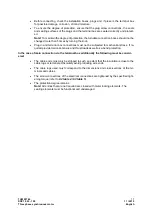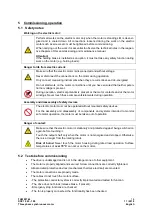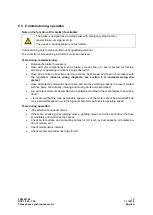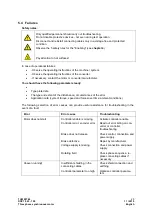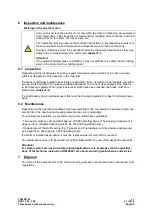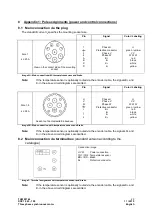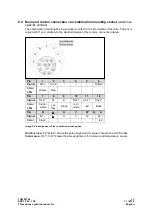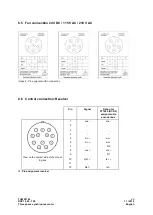
TAM 00746
12
DSP1 045 - 100
11 / 2019
Three phase synchronous motor
English
Output elements:
When mounting the output element, pay attention to the corresponding type of balancing.
The output elements themselves must be balanced according to ISO 1940.
When mounting or dismounting output elements (e.g. clutch disc, gear wheel, pulley),
appropriate devices must always be used.
Use a threaded hole in the shaft end.
Use intermediate disks for mechanical protection of the shaft when removing.
If necessary, heat the output elements before mounting (max. permissible temperature
at shaft end 150 °C for a short time)
Attention!
For shaft versions without feather key, the output elements must be fastened to the out-
put shaft
using suitable clamping sets
.
For shaft versions with feather key, make sure that the output elements are in
contact
with the shaft shoulder
.
Note:
Chamfer or radius at the output element and the shaft
radius to the shoulder must be matched to one another.
If the threaded hole in the shaft end is used for axial securing of output elements (such
as belt pulleys), the tightening torques listed in Table 2 below must not be exceeded:
Threads
Tightening
torque
in Nm
M5
2,2
M8
10,0
M10
19,0
M12
33,0
Table 2: Tightening torques shown with a safet bolt S of a pulley
Appropriate measures for screw locking are to be applied!
Vibrations:
The system vibration behavior at the place of use, due to output elements, mounting
conditions, alignment and installation as well as by influences of external vibrations,
can lead to an increase in the vibration values at the motor.
In order to ensure proper functioning of the motor and a long bearing life, the permissi-
ble vibration values according to EN 60034-14 must not be exceeded. Under certain
circumstances, it may be necessary to completely balance the rotor with the output
element (according to ISO 1940).
The limited vibration loads and accelerations after mounting must not be exceeded,
refer to
chapter 3.3.
In case of changes compared to the normal operation, such as increased tempera-
tures, noises, vibrations, the motor must be switched off in case of doubt, the cause
must be determined and, if necessary, the manufacturer must be consulted.
S

















